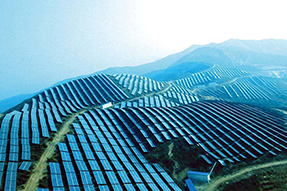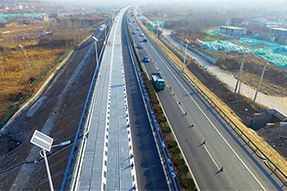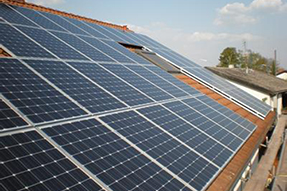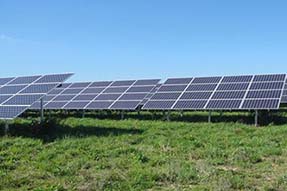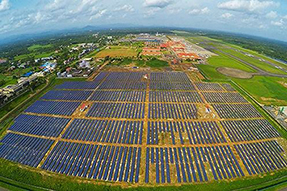The Analysis of Global Solar Photovoltaic Market in 2018
The global solar pv installation volume is keeping increase in 2017. China’s solar installation has reached 42GW in former 9 months, which has far surpassed expectation. United States has been influenced by ITC to postpone, its political risky has been increased, then its installation volume has slight decrease in the third season. It is more stable in Europe’s and Japan’s market. The emerging market, such as India, is obvious to increase. Relying China’s huge solar installation increase, the newly increased solar installation may exceed 85GW in 2017.

1. The Global Solar Photovoltaic is Rapid Developing.
There are many Countries which have installed up to GW to appear in 2018. According to BNEF’s anticipation, the global solar PV installation volume would reach 522GW in 2018, it would reach 637GW in 2019. According to GTM’s report, there would have 13 Countries to have more than 1GW installation volume in the world until the bottom of 2018, it is a huge improvement when comparing with 8 Countries which have more than 1GW in 2017. China, United States, Japan and India, these Countries would still dominate global solar installation volume. The emerging market, such as Brazil, Egypt, Mexico, Netherlands and Spanish, would have further got through, but they have not big influence to global solar installation.
“The Paris Agreement” took effect, LCOE is decreasing, Countries are positive to push renewable energy to generate. “The Paris Agreement” was took effect in 4th, November, 2016. China promised to reduce 60% to 65% of Carbon Dioxide Emission of unit GDP to be less than 2005. The non-fossil fuel energy would be around 20% of total energy in 2030. Australia promised the gas emission of greenhouse effect in 2005 would be reduced 26% to 28% until 2030. The carbon emission target that many Countries promised has pushed renewable energy development, such as Wind Energy and Solar PV energy etc. Base on the improvement of current solar pv industry, Countries’ LCOE is decreasing, the economic efficiency of future solar pv industry is outstanding, the development of Countries’ solar industry is vigorous.
Countries are hopeful to realize Grid Parity, the development of solar industry is tendency to be stable. The mature solar pv market of large Countries has been developed to market-oriented mechanism, the Bidding system has pushed the system cost decrease. Japan, Germany and China started to carry out bidding system since 2015, further to put forward the cost decrease. For the Germany’s bidding in 23th, November, the average price is Euro 38.2/MWh for the winning bidding. Its price has drastically decline when comparing with the second bidding whose average price was Euro 42.8/MWh in this year. Chile and Dubai have realized to grid parity. China is predicted to realize grid parity in 2020.
2. The Solar Photovoltaic of Large Countries is Stable to Increase.
1) United States.
The entire solar installation of United States was well developing in 2017. The installation volume was 2044MWdc in the first season of 2017, which has slight decline to compare 2016, but considering the special situation of 2016, the entirety of the first season was well. The installation volume of second season is 2387MWdc in 2017, it had increased 8% of former year, having created the historical largest installation volume of second season. The third season was 2031MWdc, less than former year, which was mainly influenced by uncertain political and increase price of solar equipment. Overall, the installation volume of United States kept stability in 2017, it was predicted to exceed 8GWdc in whole of 2017.
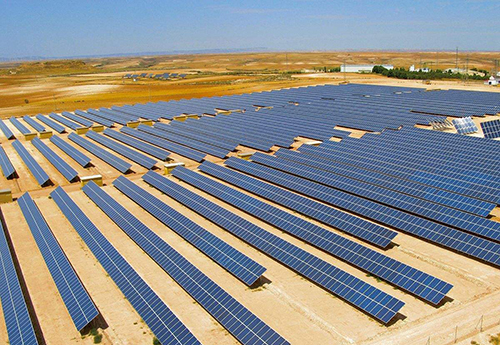
The demand of emerging cities has been started, installation volume is keeping increase. States of US progressively put forward Renewable Energy Portfolio Standard (RPS), it is predicted to put forward more than half of US’ states before 2025. Some States are improving the target. California has improved the target of 2030 up to 60%. The demand of Utah, Texas and Florida has been started in order to realize RPS target, the installation demand would increase.
Sunshot plan to reduce the cost of solar generation, policy planning has pushed the competitive edge of solar pv cost. Sunshot planned to put forward in 2011, aim to reduce cost of solar generation. The solar generation of resident and commercial solar pv system has respectively realized 86% and 89% which are plan for 2020, the solar pv generation of Public Utility has achieved objective in advance three years, the cost has declined to US$0.06/KWh. The new Sunshot plan is that the solar generation cost of public utility would decline to US$0.3/KWh, commercial solar cost decline to US$0.04/KWh, the resident solar cost decline to US$0.05/KWh in 2030, which would save 50% of solar generation cost. The cost advantage of solar generation is outstanding.
Overall, because of uncertain policy crisis, installation volume may be influenced, but as States’ plan to support, the cost competitive edge is gradually clear, the long-term solar installation volume would keep stable to increase.
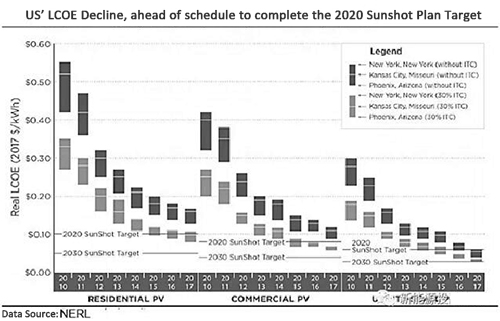
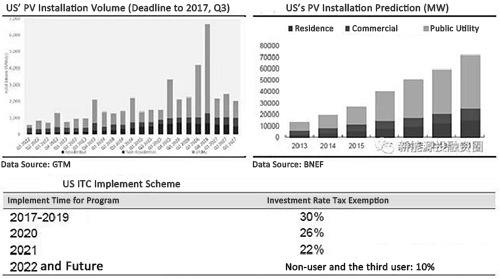
2) Japan, Germany.
Leading into bidding system, entire demand is stable. Japan led into solar bidding system in October, 2017, While Germany banned FiT (Feed-in-Tariff), both of these Countries are positive to implement bidding system to replace FiT policy, to push the Grid Parity of solar PV system. Both of the policies don’t have big fluctuation, it is predicted the installation volume can be still stable to increase in future.
3) India.
Indian newly increase installation volume has surpassed Japan to become No.3 in 2017, solar photovoltaic becomes “cheap” energy. The Indian increase solar installation volume was 7.5GW in the former four seasons, while Japan was under 6GW, India has surpassed Japan to become No.3, falling behind United States. The electric cost of Grid-Tie is low as US$0.04/KWh, solar power has become Indian cheapest energy.
The increase of home roof solar photovoltaic is potential huge. Indian home roof photovoltaic was rapid increase in 2017, CAGR has reached 117% in five years, the newly increase installation was 1.3GW in 2017. Whereas, this increase rate is still not enough as the 40GW target of 2020. In addition, the home roof photovoltaic is just gathered in Tamil Nadu, Andhra and Karnataka, still many markets are waiting for developing.
Indian Government has an obvious encouragement. Government plan to realize 100GW installation target in 2022, including 40GW solar rooftop generation and 60GW large and medium-sized solar grid-tie projects. Under this condition, Indian government has issued many important policies and stimulating measures, including Available Funding Gap Fund, 30% investment subsidy for Rooftop Distributed Solar system, Acceleration Depreciation and Local Manufacturing Protection, etc.
As being encouraged by Government and Grid Parity, India would have a huge improvement for installation volume in the next year. The installation of solar rooftop would get a great increase.
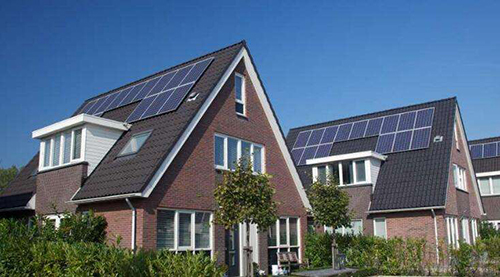
4) The New Emerging Countries are Tremendously Increased for Solar Industry.
The demand of Europe’s emerging Countries is increased, Netherlands and Spanish would become the Countries whose installation volume is more than 1GW. In order to realize this target that 20% energy is from renewable, Countries are positive to make plan.
In order to realize renewable target, the future demand of France and Netherlands is increased. France has improved the bidding volume from 1.45GW to 2.45GW. Spanish recover the solar photovoltaic market in order to realize the target of 2020, it signed a contract for 3.9GW in August, 2017, the project is predicted to grid-tie between 2018-2019. Netherlands is positive to carry out Renewable Energy support Program, planning to close all of Coal-Fired Power Plant in 2030. It is predicted to be listed in the Countries whose installation is above 1GW.
Latin America is emerging, Mexico and Brazil have a strong increase. Latin America is still in the initial stage of solar pv industry in the world. In recent years, it has a strong increase, from 1.5GW in 2014 to 2.7GW in 2015, then to 4.14GW in 2016, the average increasing is near 50% annually.
Countries of Latin America have presented the confidence to develop solar pv industry. Mexico is under rapid development period for solar pv industry, the “Special Plan for Renewable Energy Exploitation” that Mexico published has clearly presented to increase the installation volume of renewable energy. Besides Government’s confidence, the advantage of solar energy is huge and the PPA agreement has a better operation, which has improved the economy of solar system. Brazil has announced a decade energy extensive program and agenda, PDE2016, being predicted to realize above 13GW for Solar installation volume in 2026.
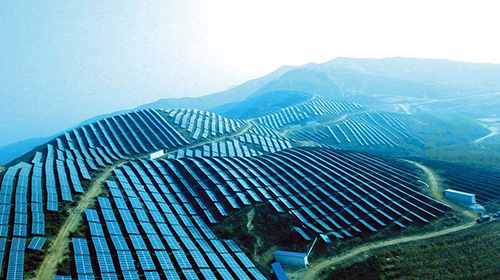
North Africa has a well sunlight condition, the development of solar energy is huge. North Africa is one of the most solar radiance areas. The solar radiance of Egypt can reach 2000-3000 KWH/m^2 annually, the solar is from North to South, being able to radiate 9-11 hours. Nevertheless, the solar installation volume of whole North Africa and Middle East is just 3.4GW in 2016, just being 1% of global solar installation. Under the condition that the cost of global solar PV system decline, putting forward renewable energy, the development available of solar Photovoltaic is huge, it is predicted that future solar installation would be obviously improved. Egypt is benefited from foreign investment, European Bank for Reconstruction and Development to support, plus its Congenital Condition to strength, it is predicted the installation volume would reach above 1GW next year.
The solar industry of emerging Countries would have rising period in future years, the Geographical condition and policy support would make the demand of solar installation volume has a huge increase. But, as a whole, it just have small influence in the world. The increase of solar installation volume mainly rely on India, China and other Large Photovoltaic Countries in 2018.
Bingsolar Power, 26th, May, 2018
